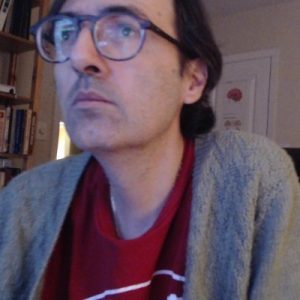“Immature poets imitate; mature poets steal; bad poets deface what they take, and good poets make it into something better, or at least something different. The good poet welds his theft into a whole of feeling which is unique, utterly different than that from which it is torn.”
— T. S. Eliot
You may have heard some variation of Eliot’s quote (“good artists steal”), perhaps attributed to someone else, like Steve Jobs or Pablo Picasso. Ironically, the statement itself is an excellent example of how creative work often builds on work that came before. As poets, we know one of the best ways to improve our own writing is to read widely, to be inspired by others. Making good art comes from a synthesis between our own unique experiences and interacting with others and their art.
To celebrate poetry month, we’re honoring the poets who came before us. We asked a few poets from theVERSEverse community a simple question: “whose paths do you trace?” Here were their responses , peppered with some of my own reflections:
Katie Dozier
Katie Dozier (KHD) is a poet, curator of The NFT Poetry Gallery, Prompt Series Editor at RattlePoetry, and Host of podcast ThePoetrySpace_
“Lately I’ve been most inspired by the poet Bob Hicok. Not only is he one of the best poets alive, I’m inspired by his dedication to “getting his ass in the chair” to write every day. Talking with him for episode #57: “The Flow State” on my podcast, The Poetry Space_, reminded me that a work ethic focused on continually striving to be a better creator is crucial as a poet—both in the more traditional realm and in our web3 world.”
Inspiration is multi-dimensional: a poet’s writing style, form, subject matter, or even their work ethic can inspire, as is the case with Katie being inspired by Bob Hicok. In my own writing journey, I’ve been grateful for writer friends who challenge me to show up and keep writing.
OddWritings
OddWritings likes writing 0dd things such as word-unit palindrome poems. OddWritings is currently working on this book.
“Two poets: William Butler Yeats and Anthony Etherin. I love Yeats’ imagery and lyrical music, and Etherin’s ability to write palindrome poems astounds me.”
Yeats’ lyricism has inspired countless poets, including me. I was previously unfamiliar with Anthony Etherin’s work, so I dug a bit deeper. I discovered that Etherin is the inventor of the aelindrome: “a new lettristic constraint, in which letters are parsed according to premeditated, palindromic numerical sequences.” There is a mathematical rigor that comes with experimenting with constraint in such a detailed manner, and I can only imagine how meticulous Etherin had to be to create the aelindrome.
Lorepunk
Lorepunk is a web3 poet, copywriter, and essayist who writes for publications such as NFTNow, Accelerate Art, and gm3 Group.
“Marilyn Hacker is a modern master of formal poetry and inspires me with her clarity, grace and rigour, and the fearlessness with which she approaches contemporary issues with the power of classical forms.”
Indulge me as I trace this line of inspiration further back. In this video, Marilyn Hacker reads “Rune of the Finland Woman” from a cycle of poems based on the Hans Christian Andersen story “The Snow Queen”. With this poem, she interweaves “The Snow Queen” with the story of her friend who cared for orphans in Hungary during WWII. This is a striking example of how poetry can be a tapestry of inspiration, weaving both people we know personally and those we feel like we know through their work.
Elisabeth Sweet
Elisabeth Sweet (a.k.a @speciesofvalue on X/Twitter) is a poet exploring patterns of randomness. She’s also Community Manager at theVERSEverse & FeralFile.
“Maria Popova’s book Figuring rewired my brain, revealing the myriad ways art, poetry, and science entangle and uphold history and our human experience. Maria shows that you do not have to do or be only one thing in life, but rather you can weave a life that patterns according to your vast creative expression.”
What a beautiful, fluid framework for looking at the human experience. I too have wrestled with the myth that we have to be one thing in life. It takes time to unlearn and replace this myth with more nuanced frameworks like this one.
Thank you to Katie, OddWritings, Lorepunk, and Elisabeth for honoring the poets who influence you. Sharing your inspirations gives a more intimate glimpse into how you became the poets you are today 🌱
Contextualizing the question of inspiration to the web3 world brings me back to my own journey into the space. Creator royalties piqued my interest in the space because I saw their potential to give creators their credit where credit is due. Royalties have since become a more complex question since 2020, and I’m excited by the potential of web3 technology to help us honor the inspirations who come before us.
Whose paths do you trace? Starting today and throughout the month of April, we invite you to post a selfie of you with your favorite poem, book, chapbook, picture of a poet/author, hashtag #reVERSEverse + tag us @theVERSEverse. Happy Poetry Month 💗
—
Shannon Chen See // watchensee is a poet + web3 marketer responsible for theVERSEverse’s editorial branch.





